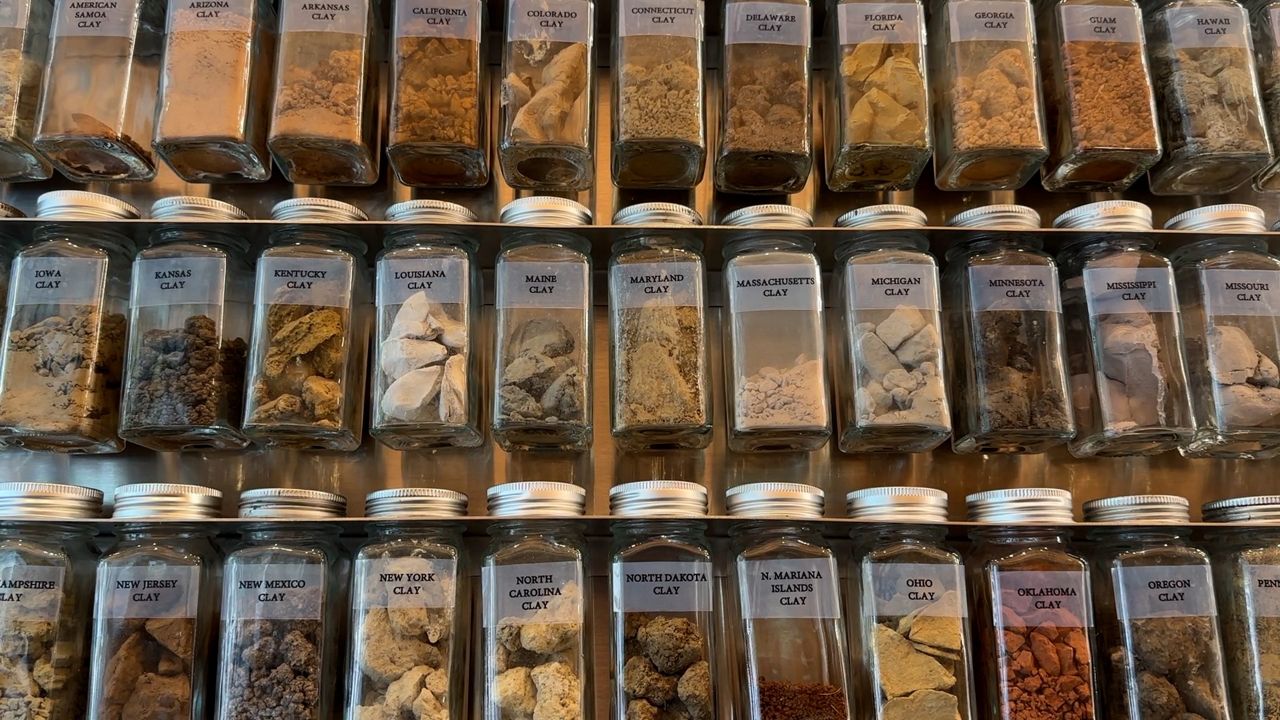LOS ANGELES — Water. Clay. Wood ash.
Three simple ingredients that make a truly profound and multifaceted art installation by Adam Silverman. Silverman often uses materials found in one place to create his hand-thrown pottery — site specific, like a campus or a town — but in 2019, he decided to go bigger.
“56 states and territories and then combining them into a single united material,” he explained.
As we entered 2020 — on the heels of a divisive election and the start of a global pandemic — the project became even more important to him. But also more complicated. He needed to gather the components, so asked friends and friends of friends in different places to send him the materials.
“And then once I ran out of the kind of 2 to 3 degrees of separation, I started using Instagram,” he said, listing states on the platform and asking total strangers if they’d help.
The response was huge. He’d send each participant a prepaid postal box with a bottle for collecting water and two big Zip-lock bags for the clay and ash.
“And then,” he chuckled, “I sort of waited for the mail to show up.”
All of the materials were combined in large bins, mingled together to make Common Ground — a collection of 56 pots plus 56 simple place settings of a plate, a bowl and cup, which are on display at the Skirball Cultural Center for the duration of this year. But not just to admire. There’s an added element to Silverman’s project: food.

Working with food scholar Dr. Scott Barton, they’ve curated a series of meals, which Silverman points out are decidedly unfussy.
“I wanted the meals to be as meaningful as and with as much attention as the ceramics are,” he explained. “A simple kind of humble meal that it’s not like a 12 course, you know, tweezers and eyedropper chef’s meal.”
The first one held at the Skirball was a Shabbat meal for museum staffers who were invited to share family recipes and foods from their homelands. It was a moving experience for museum director Sheri Bernstein, who said getting to have a meal served on the work of art was a first for her.
“I have never had that experience before and it’s kind of thrilling,” she said. “Food is a way to get to know people on a deeper level.”
She marvels at the pieces — and the display of ingredients — and is continually struck by how Common Ground fits so perfectly into the Skirball’s tradition of using art to foster human connection.
“We are living at a time when there are so many things that threaten to separate us and kind of dehumanize us,” Bernstein said. “Whatever we can do to try to bring people together, whatever tools we have, we should try to use them.”
She particularly loves how the pieces are flawed — at times stitched together with what Silverman calls sutures. It’s a technique he uses often, but in this case, he sees them as the scars of a young nation.
“I think of the pots as being sort of embodying the struggle,” he said. “The pots are not perfectly symmetrical. They’re beaten and there are scars. They’re still beautiful, I hope.”
Every aspect of the project was carefully planned, but there was one surprise. As Silverman received the components from near and far, he looked up each participant online, and was able to glean a lot about them from social media. They ran the gamut, demographically, geographically and ideologically, but what amazed him was that as different as they were, they often had the same reaction to his idea.
“Super conservatives were saying, ‘Yeah, we really need this.’ And super liberals were saying, ‘Yeah, we really need this,’” he recalled. “And the project was…not that they knew they were coming together on the project, but they were coming together on the project, which was really nice.”
He sees it as a sign that, for the most part, people want to get along. They just need to find common ground.



